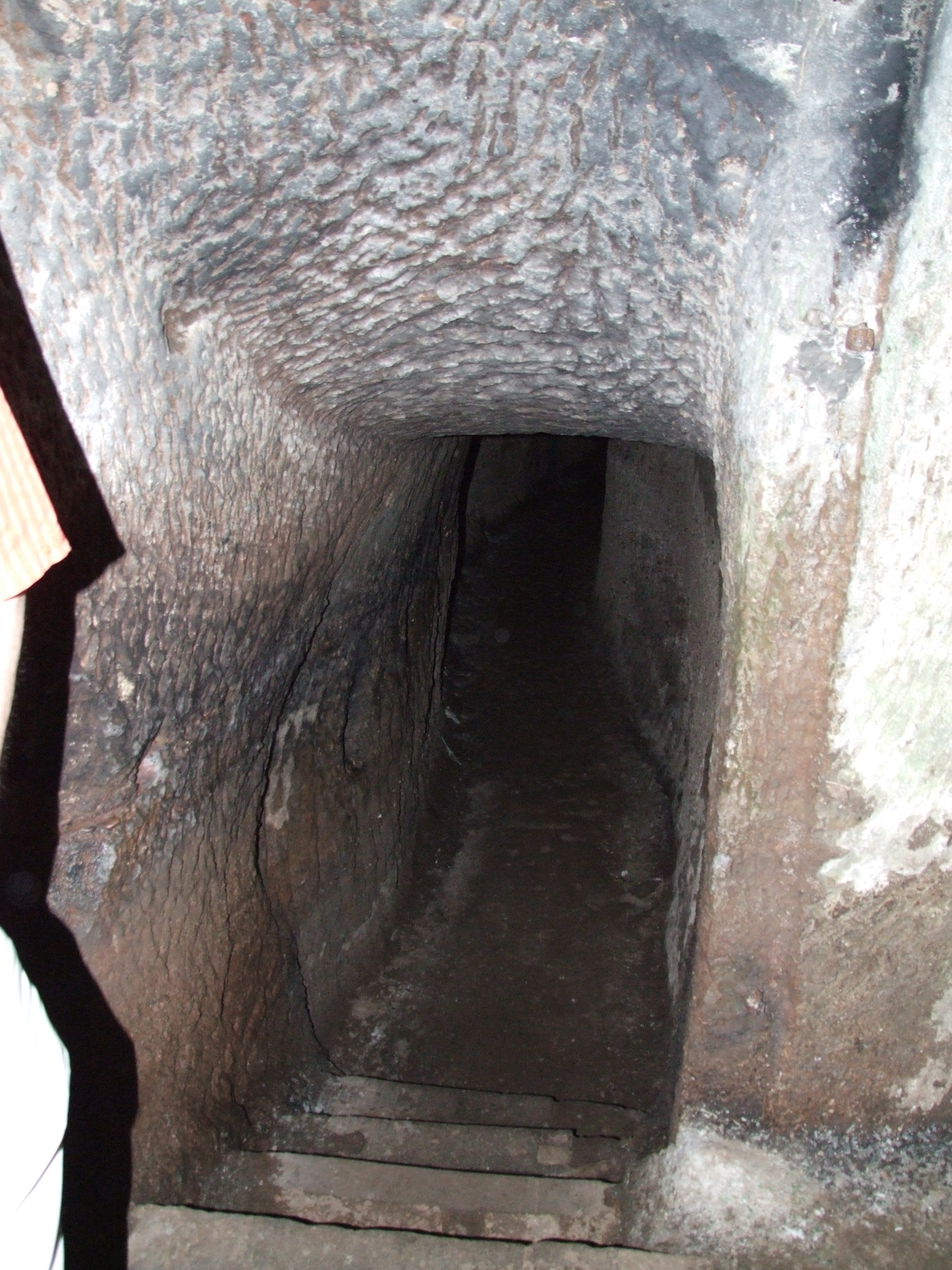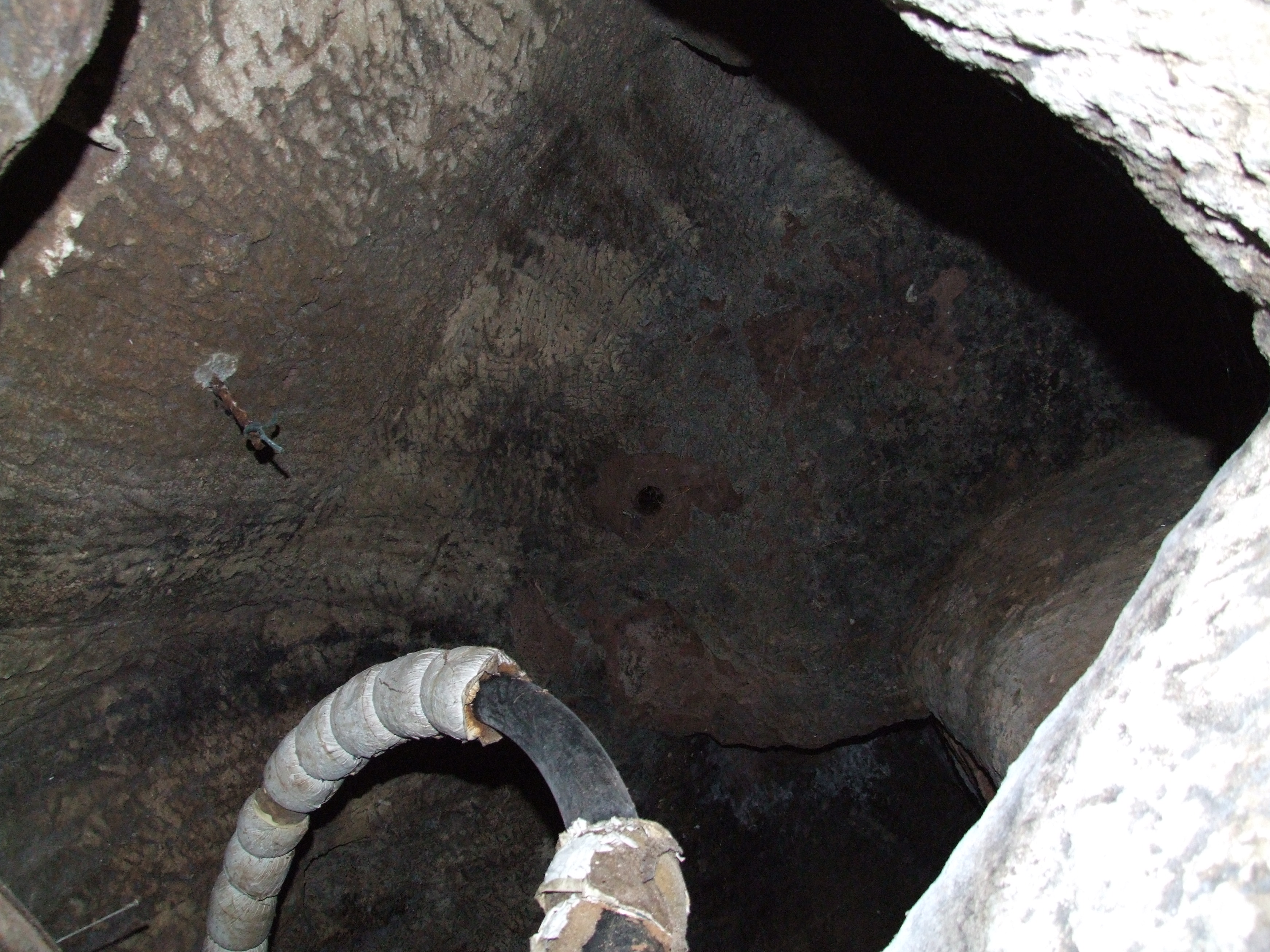Berwartstein Castle on:
[Wikipedia]
[Google]
[Amazon]
Berwartstein Castle (German: Burg Berwartstein) is a castle in the Wasgau, the southern part of the Palatinate Forest in the state


 Berwartstein has an opening on the southeast side of the cliff, commonly referred to as ''Aufstiegskamin'' ("entrance chimney"). During the early years of the castle only the rooms and casemates in the upper cliff were complete and the shaft was the only entrance to the castle. To make it easier to ascend the shaft, a portable wooden staircase or rope ladder was placed into the castle. In the event of attack, the staircase or ladder was hoisted up into the castle. This enabled the entrance to be defended by just one man who was supplied with boiling sap, oil or liquid to pour on any intruder attempting to ascend the shaft. This limited access to the castles inner rooms was probably the main reason it was never conquered during the Middle Ages. The narrow, almost vertical cliff on which the castle stands, rises to a height of approximately 45 metres.
Berwartstein has an opening on the southeast side of the cliff, commonly referred to as ''Aufstiegskamin'' ("entrance chimney"). During the early years of the castle only the rooms and casemates in the upper cliff were complete and the shaft was the only entrance to the castle. To make it easier to ascend the shaft, a portable wooden staircase or rope ladder was placed into the castle. In the event of attack, the staircase or ladder was hoisted up into the castle. This enabled the entrance to be defended by just one man who was supplied with boiling sap, oil or liquid to pour on any intruder attempting to ascend the shaft. This limited access to the castles inner rooms was probably the main reason it was never conquered during the Middle Ages. The narrow, almost vertical cliff on which the castle stands, rises to a height of approximately 45 metres.
File:Burg Berwartstein - 1.JPG, An archway at Berwartstein Castle
File:Burg Berwartstein - 6.JPG, View of the main building
File:Burg Berwartstein - 5.JPG, The bergfried
File:Burg Berwartstein - 11.JPG, One of the lower towers
File:Burg Berwartstein - 8.JPG, View of the sandstone wall
File:Burg Berwartstein - 7.JPG, Detailed view of the rock face
File:Burg Berwartstein - 9.JPG, An ascent in the rock face
File:Burg Berwartstein - 10.JPG, Entrance
File:Burg Berwartstein - 12.JPG, Candle niche in a rock passage
File:BurgBerwartstein Kapelle.jpg, The chapel
File:Burg Berwartstein - 2.JPG, The castle kitchen stove
File:Burg Berwartstein - 3.JPG, View of castle kitchen
File:Erlenbach - Rüstungen und Kanonenkugeln auf Burg Berwartstein.JPG, Armour and cannonballs
File:Burg Berwartstein - 4.JPG, View looking west
File:Burg Berwartstein - 20.JPG, View looking south to
Rhineland-Palatinate
Rhineland-Palatinate ( , ; german: link=no, Rheinland-Pfalz ; lb, Rheinland-Pfalz ; pfl, Rhoilond-Palz) is a western state of Germany. It covers and has about 4.05 million residents. It is the ninth largest and sixth most populous of the ...
in southwestern Germany
Germany,, officially the Federal Republic of Germany, is a country in Central Europe. It is the second most populous country in Europe after Russia, and the most populous member state of the European Union. Germany is situated betwe ...
. It was one of the rock castles that were part of defences of the Palatinate during the Middle Ages
In the history of Europe, the Middle Ages or medieval period lasted approximately from the late 5th to the late 15th centuries, similar to the post-classical period of global history. It began with the fall of the Western Roman Empire ...
. This castle is noted in the publication ''Works of Preservation of Monuments of Rheinland-Pfalz'', which was assembled and edited for the Ministry of Education and Culture. This states that the three prime examples of rock castles in the region are Drachenfels, Altdahn and Berwartstein, castles where the stairs, passages and rooms are carved out of the rock to form part of the accommodation essential to the defence of the castle. Although the Berwartstein appears more complete when compared to the ruins of neighbouring castles, it is only a restoration of the original rock castle. It is the only castle in the Palatinate that was rebuilt and re-inhabited after its demolition.
History
Origins
There is no definite record of the origins of the castle or its name. The name "Berwartstein Castle" is mentioned for the first time in a document dating from 1152, when the castle was granted by Emperor Frederick Barbarossa to Bishop Günther of Speyer.Occupation by robber barons
During the 13th century, feudal tenants, who carried the name "von Berwartstein" inhabited the castle, which they used as a base for raids in the manner of robber barons. The imperial cities of Strasbourg and Hagenau joined forces against the von Berwartsteins. Following several weeks of futile attacks against the castle, they succeeded in taking it in 1314, with the help of a traitor. A large amount of booty and about 30 prisoners were taken to Strasbourg. The knights of Berwartstein were permitted to buy the prisoners back for a large ransom. The knights of Berwartstein were forced to sell their castle to the brothers Ort and Ulrich von Weingarten. Four years later the castle became the property of Weissenburg Abbey.Under Weissenburg Abbey
The monastery at Weissenburg placed the castle in stewardship and established a feudal system. This allowed for the dismissal of vassals who became too presumptuous. Thus the monastery held possession of the castle for some time. This could have continued indefinitely had the last steward of the castle (Erhard Wyler) not gone too far. When he began feuding with the knights of Drachenfels, the Elector of the Palatinate took the opportunity to bring the Berwartstein Castle under his control.Hans von Trotha
Because of his dynastic ambitions, the Elector of the Palatinate wanted to bring all of the Weissenburg estate under his control. To accomplish this, in 1480 he ordered the knight, Hans von Trotha, who was Marshal and Commander in Chief of the Palatinate forces, to acquire to Berwartstein. In this way he could enlarge the property at a cost to the Monastery of Weissenburg. For the quarrelsome knight this was a pleasure to fulfil, since this gave him a chance to take personal revenge on the Abbot of Weissenburg. Years before, Abbot Heinrich von Homburg had imposed a church fine on his brother, Bishop Thilo. As a starting point for this conquering expedition, this experienced warrior first renovated the castle to improve its appearance. He built strong ramparts and bastions as well as the outwork and tower calledLittle France (castle)
Little France''Little France''
in the Dahner Felsenland brochure, Rhinela ...
.
in the Dahner Felsenland brochure, Rhinela ...
Abandonment (1591 - 1893)
After von Trotha's death, Berwartstein Castle was inherited by his son Christoph and, when he died, it went to his son-in-law, Friedrich von Fleckenstein and remained in the hands of this family for three generations. During this time, the castle was destroyed by fire in 1591, and, since there is no mention of any attacks, it is presumed that the castle was hit by lightning. Even though the main sections of the castle were not destroyed by the fire, it stood empty and unused for many years. In the Peace of Westphalia (1648), Berwartstein received special mention, when it was granted to Baron Gerhard von Waldenburg, known as ''Schenkern'', a favorite ofEmperor Ferdinand III
Ferdinand III (Ferdinand Ernest; 13 July 1608, in Graz – 2 April 1657, in Vienna) was from 1621 Archduke of Austria, King of Hungary from 1625, King of Croatia and Bohemia from 1627 and Holy Roman Emperor from 1637 until his death in 1657.
...
. Since he did not restore the castle, it fell into ruins.
New life
A certain Captain Bagienski purchased the castle in 1893. In 1922, it was sold to Aksel Faber ofCopenhagen
Copenhagen ( or .; da, København ) is the capital and most populous city of Denmark, with a proper population of around 815.000 in the last quarter of 2022; and some 1.370,000 in the urban area; and the wider Copenhagen metropolitan ar ...
, and thus went into foreign ownership. Since he was seldom in Germany, he asked Alfons Wadlé to be his steward. Later on, Wadlé was able to purchase the castle.
The village of Erlenbach below the castle was completely destroyed during World War II
World War II or the Second World War, often abbreviated as WWII or WW2, was a world war that lasted from 1939 to 1945. It involved the vast majority of the world's countries—including all of the great powers—forming two opposing ...
, and its inhabitants sought shelter in the castle. After the war, the roof had gone as well as the woodwork around windows, doors, staircases and other furnishings. Since the castle was not financially supported, Alfons Wadlé went about the renovation himself. At first he was only able to do what was essential to protect the castle from the elements.
Layout

Original entrance
Well
The extremely deep well is one of the castle builders' greatest accomplishments. The well has a diameter of 2 metres (6 ft) and was hacked out of the rock to the bottom of the valley some 104 metres below. This was essential to the castle's survival when under siege.Great Hall
The historic Great Hall or ''Rittersaal'' has a cross-vaulted ceiling. An engraving on the supporting central pillar shows that it dates to the 13th century. The south wall of the hall is made from rock and includes a hewn-out lift shaft used by the knights of Berwartstein to deliver supplies to the table and deliver food and drink from the kitchen above.Underground passageways
Carved out of the cliff and accessible even today are corridors and passageways which used to be part of the large underground defence network. Although not accessible today, there was once a tunnel from the castle to the village below. These tunnels were hewn out with hammer and chisel and partly dug through the soil.Little France outwork
To the south on the opposite side of the valley from the castle on a spur of the Nestelberg can still be seen the tower ofLittle France
Little France is a suburb of Edinburgh, the capital of Scotland. It is on the A7, approximately south of the city centre.
The area falls within the parish of Liberton in the south-east of the city. It acquired its name from members of the ent ...
. This tower was part of an outwork or small subsidiary castle built by the well known knight and castellan of the Berwartstein, Hans von Trotha. The tower was an important observation post and defensive position, and meant that any attackers would have found themselves caught in a crossfire between the tower and the castle. The open ground in the valley below between the tower and castle still bears the name ''Leichenfeld'' ("Corpse Field"), a reference to the battles fought here. There is also evidence of an underground passage between the tower and castle which is no longer accessible today since it has largely collapsed.
Gallery
Partial views of the buildings
Rock structures and underground passages
Interiors and furnishings
View
Little France
Little France is a suburb of Edinburgh, the capital of Scotland. It is on the A7, approximately south of the city centre.
The area falls within the parish of Liberton in the south-east of the city. It acquired its name from members of the ent ...
File:Burg Berwartstein - 21.JPG, Looking north from the bergfried
File:Burg Berwartstein - 22.JPG, View looking northeast
References
* Theo Wadle (Ed.): ''Burg Berwartstein''. 13th edn., Wannweil, 1980External links
* {{commons, Burg Berwartstein Castles in Rhineland-Palatinate Imperial castles Rock castles South Palatinate Buildings and structures in Südwestpfalz